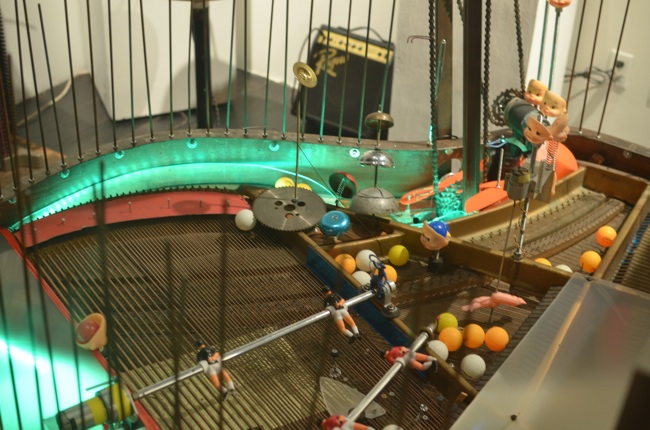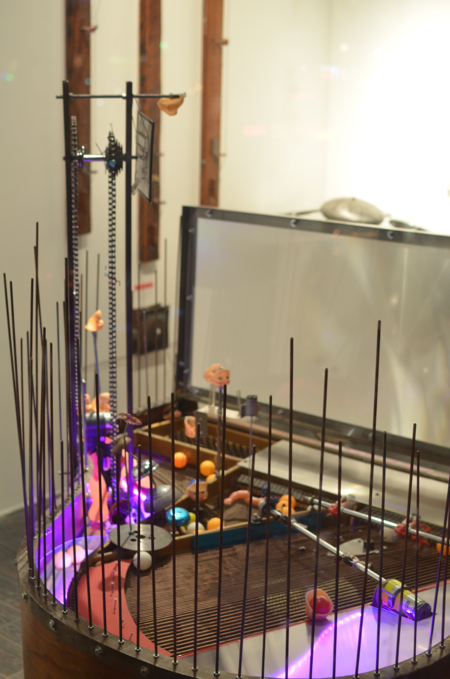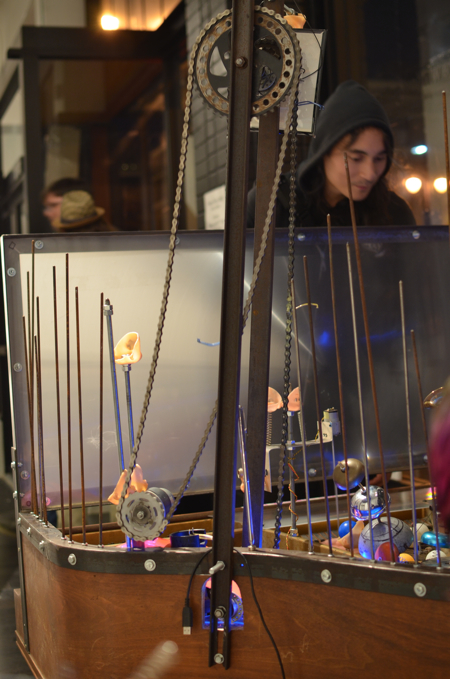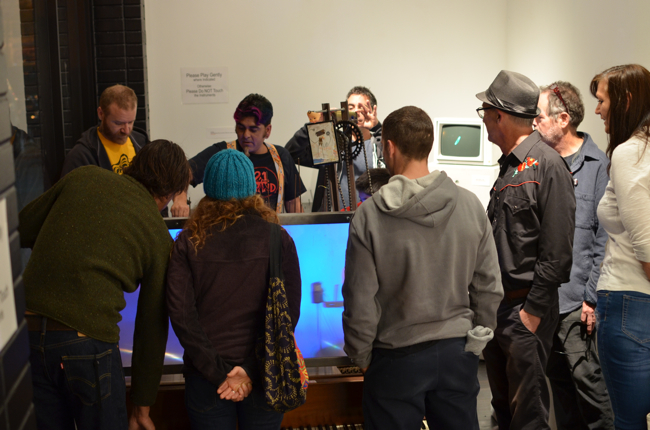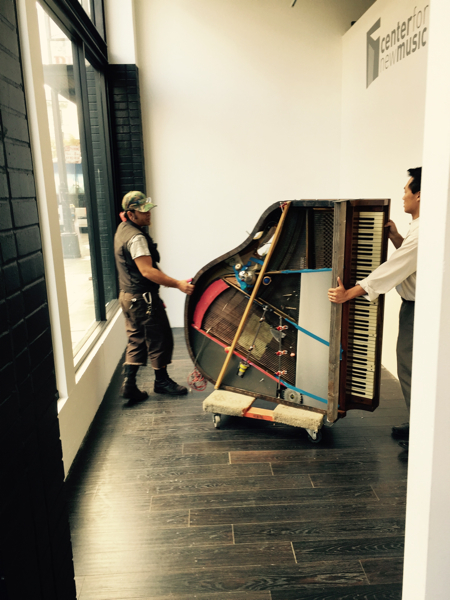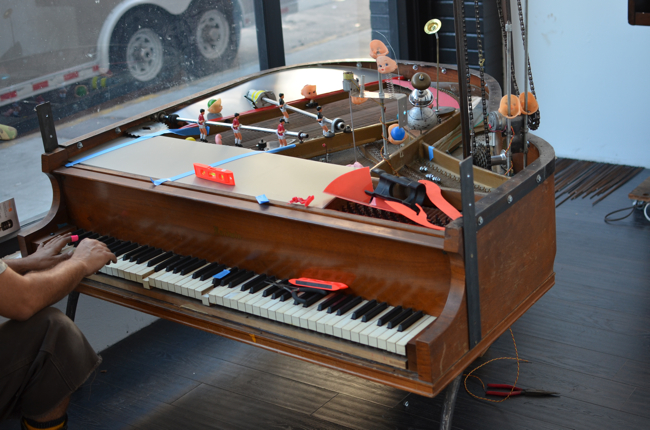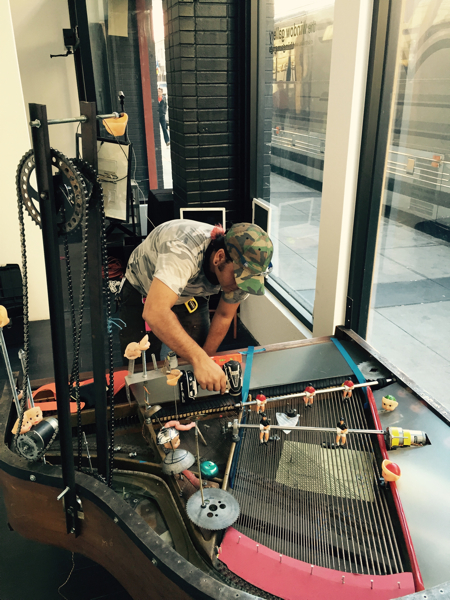PPPPs - Prepared Player Piano Pinball system
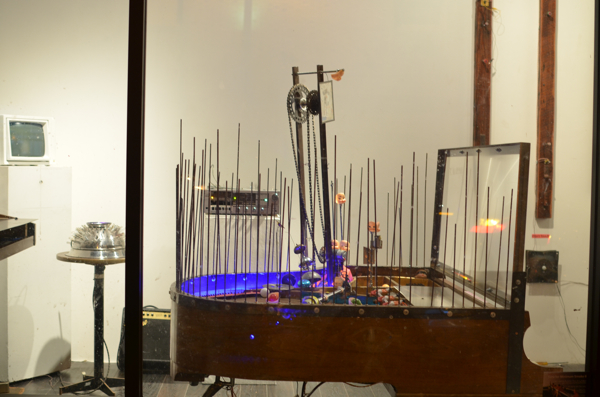
PPPPs - version 2
Center for New Music
Nov 5 - Dec 31, 2015
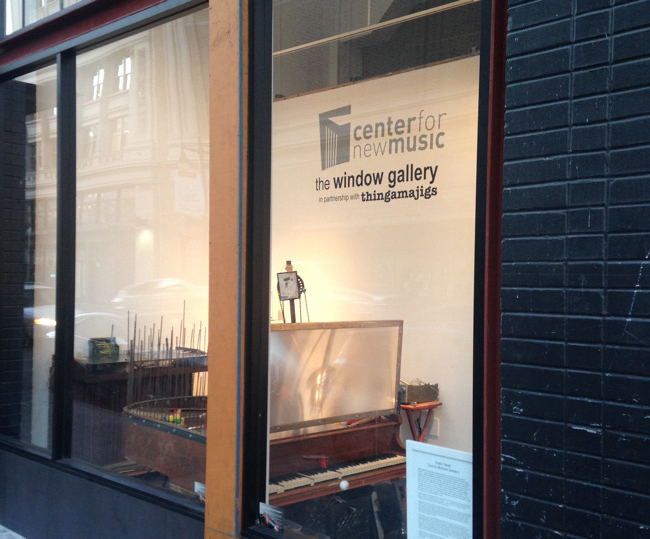

Nov 2015 - Installing at CFNM
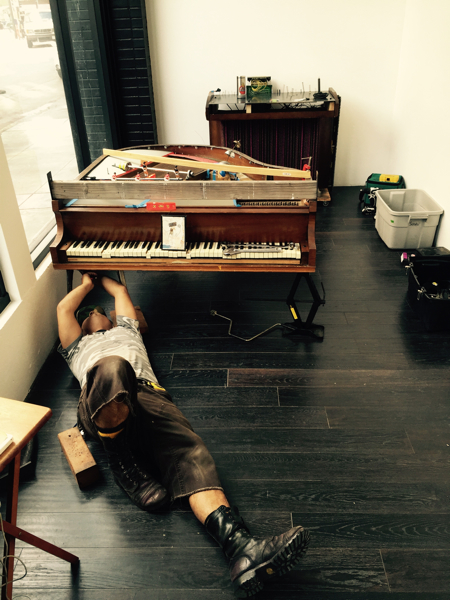
Oct 2015 - Version 2 rebuilding!
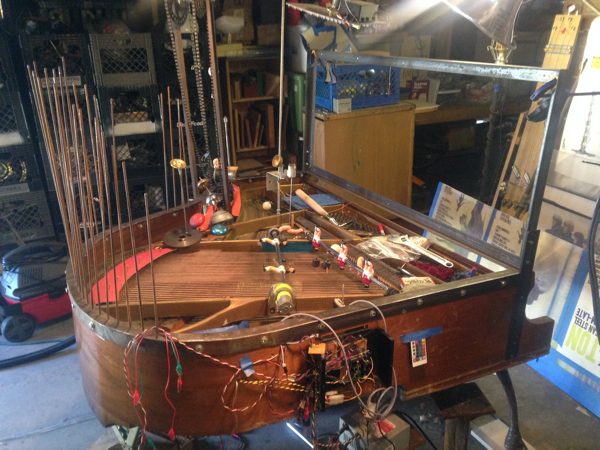
another Progress pic: Musical Fence, Electronics and a NEW lens frame!
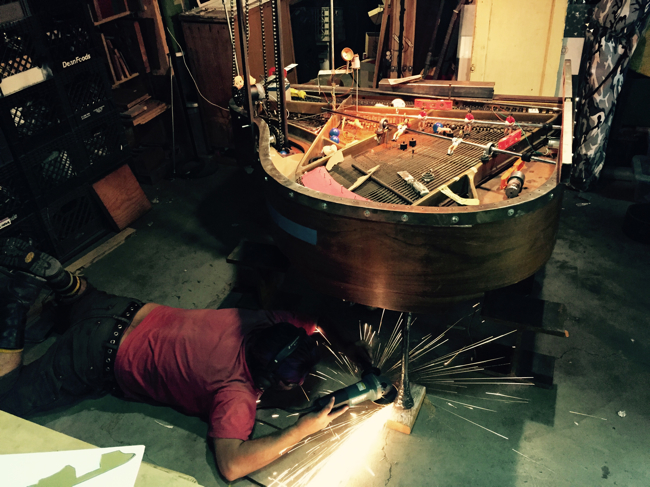 Not at all awkward... just a little adjustment
Not at all awkward... just a little adjustment
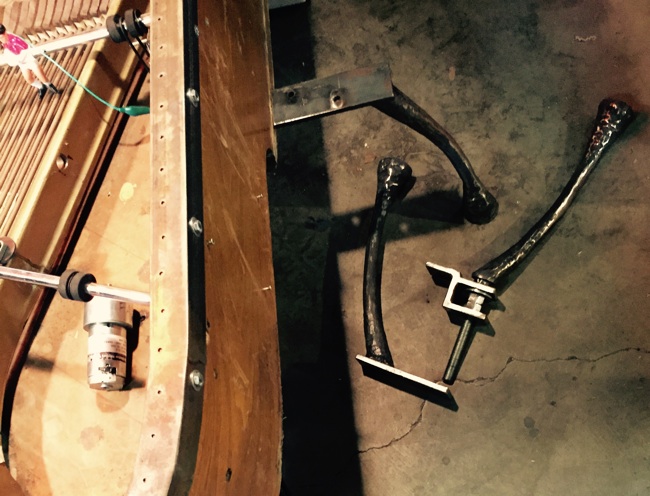 Beautiful legs smithed by Ben Carpenter!
Beautiful legs smithed by Ben Carpenter!
Mostly done building a new bike chain elevator
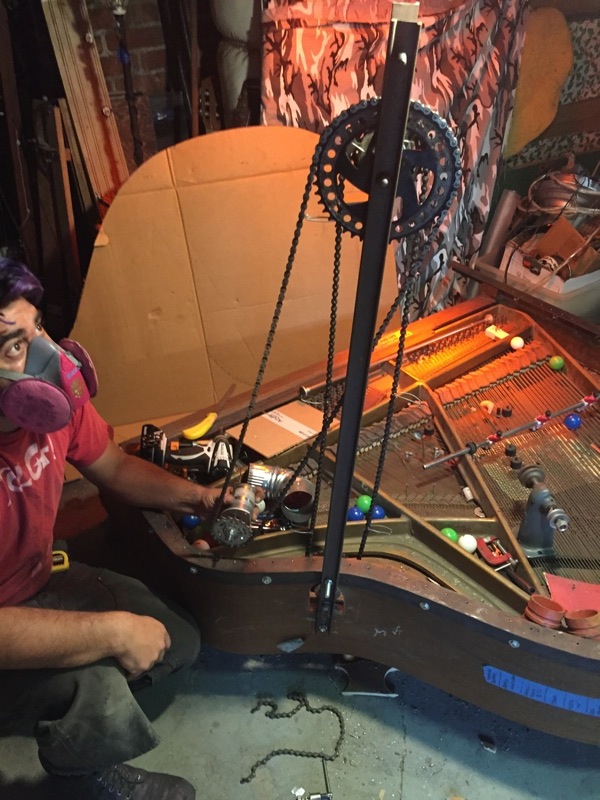
"Huh... I guess that'll work..."
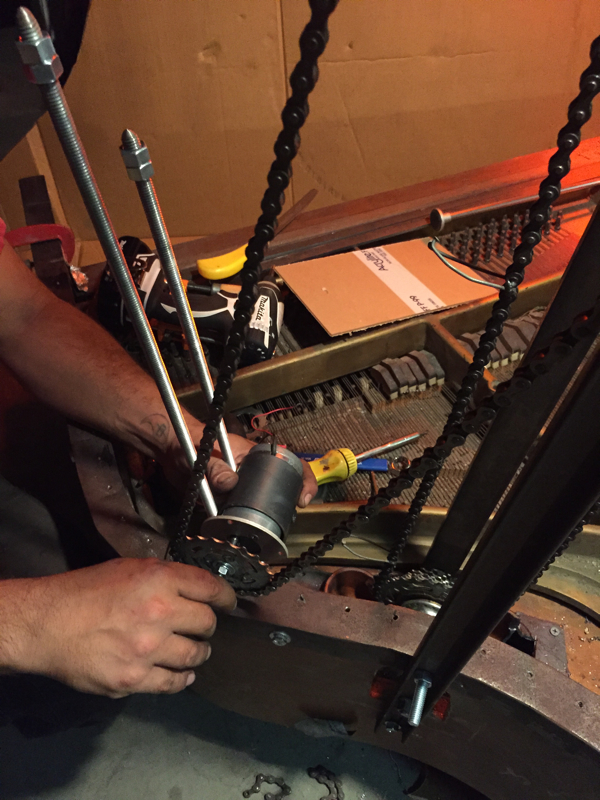
Custom motor mount! Sheet metal wrapped around the motor, with an acoustic gasket (shop towel) to minimize transmission of motor noise to the frame and soundboard
The motor mount rides on two threaded rod supports, so the entire assembly can be raised or lowered to get the right chain position and tension.
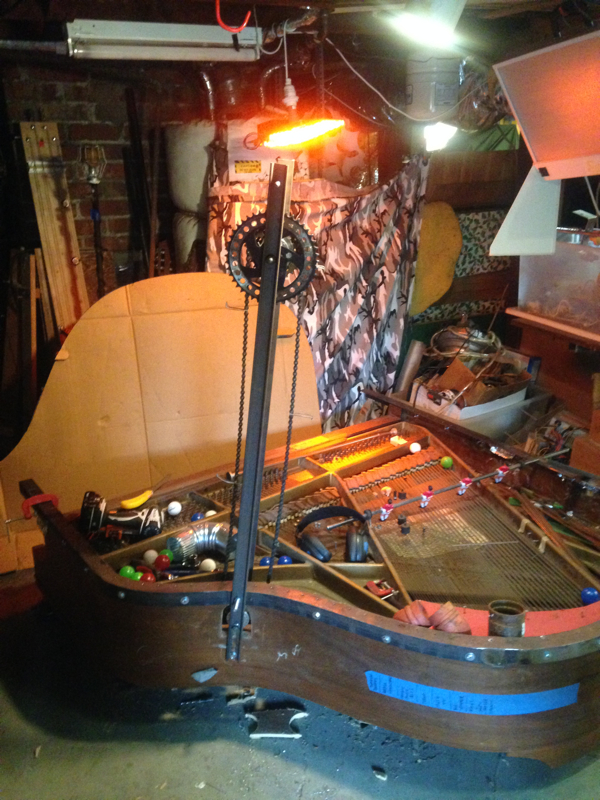
The elevator mounts into the outer frame of the piano.
Everything has to come apart for transportation...
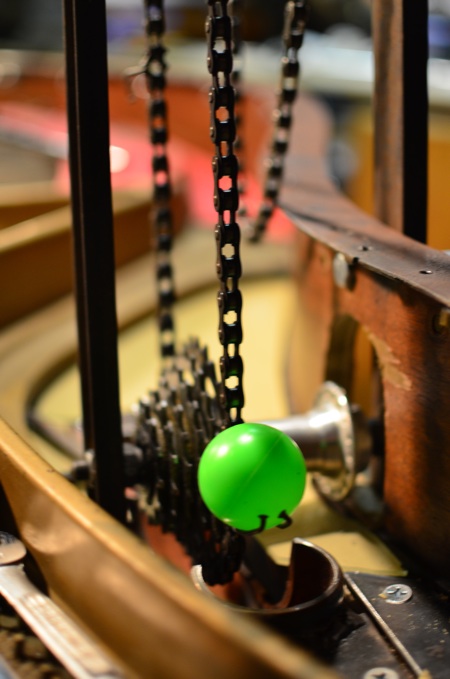
pickup channel installed!
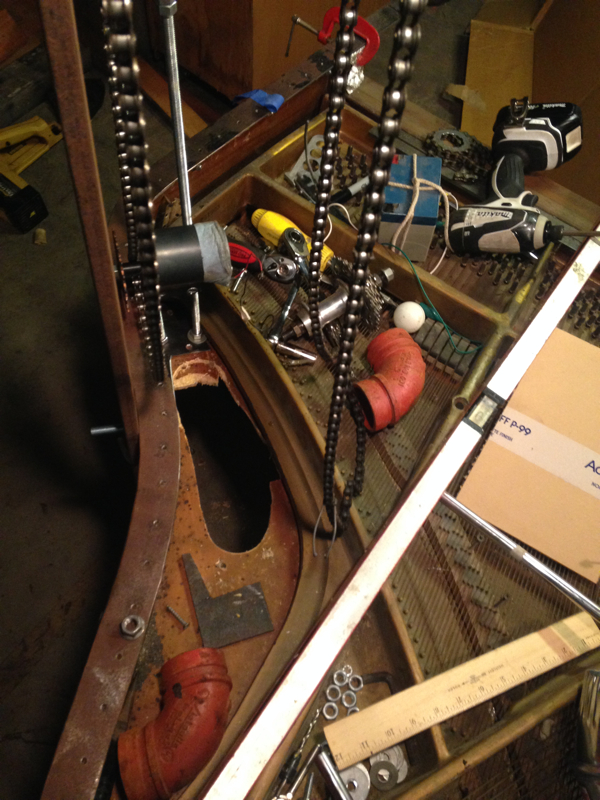
Cut a hole in the soundboard so balls can drop below to be picked up.
Surprisingly limited space to work with...
Sept 13, 2015: Musical Fence
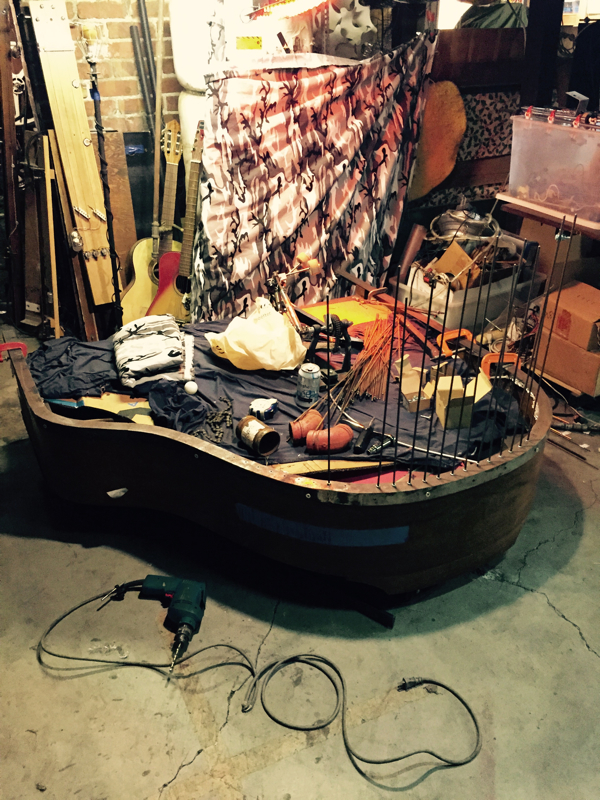
Finished drilling and tapping holes along the outside of the piano frame for a Musical Fence. The Musical Fence (inspired primarily by Tom Nunn's use of metal rods in his instruments) consists of MANY 3/16" steel rods of various lengths spaced just far enough apart that balls tend to hit only one at a time, but close enough that the balls cannot pass between them. Metal Rods, fixed on one end, produce lovely sounds when struck or bowed (the first use of this technique is attributed to Ernst Chladni and the guy that invented the nail violin (a very long time ago)). Previously I used plexiglass sheets to surround the "playing field" (like a hockey rink), and while this served to contain the balls it did not serve the goal of making all elements of the system musical. Musical Fence does this and is aesthetically a bit more interesting than plexiglass...
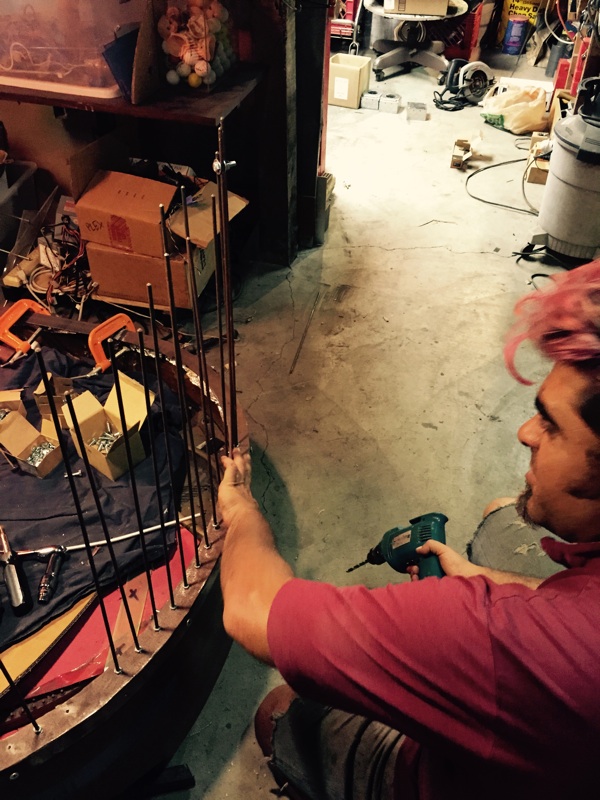
Trying to decide on the best way to lock the rods in to the metal lip. Lock nuts on top help to tighetn the rods down, but they tend to work loose with vibrations (of which there are plenty). Probably need to lock the rods down with nuts on both sides. Though the nuts reduce the acoustic transmission it's better than having them rattle and not produce clean pitches...
PPPPS history and concept:
the Prepared Player Piano Pinball system is intended to be an ongoing project to use up all the cool electromechanical bits I've collected over the years.
I found the piano as I was finishing my residency at Recology in 2007. After detuning the piano (in the process of trying to move it), Cenk Ergun and I immediately set about preparing the piano and along the way realized that ping pong balls made lovely sounds as they bounced around on the strings. The frame of the piano creates a barrier to contain the balls (somewhat). Thus, the idea of prepared player piano pinball was born.
Later on, I became interested in Cybernetics (the influence of Michael Schippling) and the idea of musical systems (rather than compositions)
such as Gordon Mumma's "hornpipe", David Tudor's "Bandeon!", and "Rainforest", and Leo Villareal's LED installations.
The general idea is to create multiple devices, each performing a function, that interact with one another. The function of each device (collect all balls, act when triggered by sound, act when movement is sensed, clear balls from area, etc) may conflict with the goals of other devices and, yay, complexity results! By adjusting parameters the system can be made to act in interesting, (unpredictable!) ways, to produce music. Rather than pre-defining/designing the entire system, I'm experimenting and modifying in an improvisatory manner.
A realization of John Cage's Fontana Mix documenting the process of experimenting
and constructing elements of the Prepared Player Piano Pinball system in 2013.
